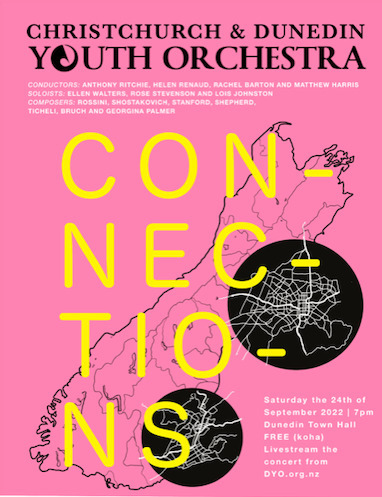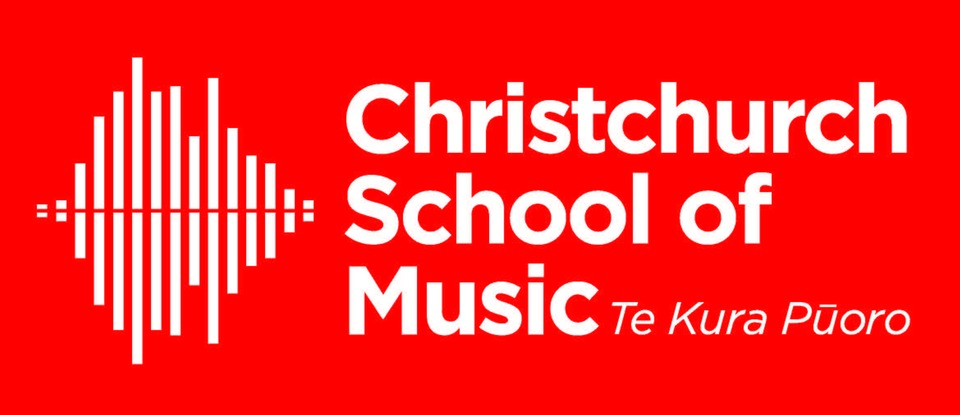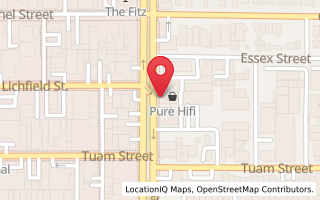COMBINED CONCERT OF THE CHRISTCHURCH AND DUNEDIN YOUTH ORCHESTRAS Dunedin Town Hall, Saturday 24th September 2022
Given the strictures imposed by the pandemic over the last two years, it was a heartwarming occasion for the two South Island Youth Orchestras to combine and present their joint concert in the spacious ambience and vibrant acoustic of the Dunedin Town Hall. The programme was wide-ranging, presenting first performances of New Zealand compositions alongside traditional favourites, showcasing both soloists and the expansive spectrum of the instrumental sections of the youth orchestras.
The title of the opening piece on the programme, A Grand Adventure, by Georgina Palmer, first year student at the Otago University’s School of Performing Arts, was apt for both occasion and composition: it provided the evening with a concise and buoyant opening, in a readily accessible idiom, particularly effective in its employ of percussion and brass.
Youth Orchestra concerts regularly present young solo performers, and on this occasion favourite works of Bruch, for both cello and violin, made for a fine complement of Romantic repertoire. Cellist Ellen Walters invested Kol Nidrei with an appropriate expressive warmth, and violinist Rose Stevenson afforded the imposing first two movements of Bruch’s G Minor Violin Concerto both drama and expressive cantilena.
The brass and percussion sections of the Christchurch Youth Orchestra relished both the taut gestures and contrasting chordal sections of Frank Tichelli’s Angels in the Architecture, framed by evocative use of wineglasses, and by the expressive soprano of Lois Johnson, placed in the gallery above the orchestra. She was joined by soprano Courtney Hickmott to present the premiere performance of Patrick Shepherd’s Maringi noa nga roimata: in this lament of personal loss, the vocal lines of the two soprano soloists blended effectively across the gentle, sustained textures of the orchestra, giving the second half of the programme a sense of inner repose.
The joint orchestras were heard to maximum advantage in Rossini’s celebrated overture to his final opera, William Tell (even if the expanded brass section rather overwhelmed the final Galop in the Town Hall’s lavish acoustic) and in Stanford’s colourful Irish Rhapsody No.1. The central section of the Stanford, based on the folksong Danny Boy, showcased a fine depth of sonority and unanimity to the string section, as did the concert’s concluding work, Shostakovich’s Waltz from his Second Jazz Suite.
The two orchestras were in the sympathetic and accomplished hands of their conductors Anthony Ritchie, Helen Renaud, Rachel Barton, and Matthew Harris, and it is to be hoped that such a joint venture may be the first of many.
Blair Professor Terence Dennis MNZM FRSNZ FNZAH


